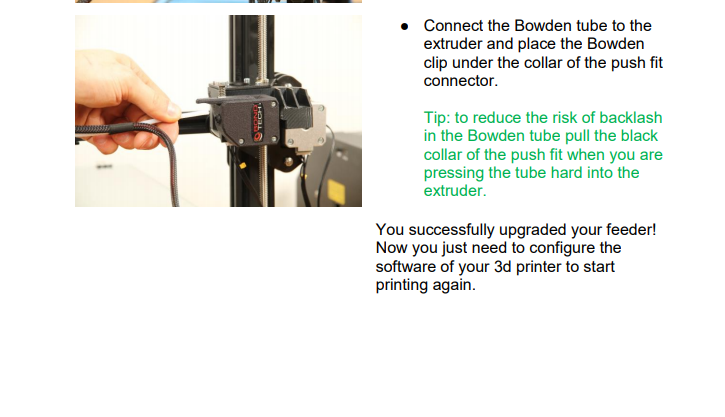For @Luke-sLaboratory.
This is @mwolter 's code modified to work with Slic3r, PrusaSlicer or Slic3r++. Follow the instructions in the comments to configure Slic3r.
Slightly changed so that the minimum size of the mesh is 3x3 on prints with small base size.
#!/usr/bin/python
"""
Slic3r post-processing script for RepRap firmware printers which dynamically defines the mesh grid dimensions (M557) based on the print dimensions.
{1}
Usage:
{1}
Slic3r Settings:
In Print Settings > Output Options
1. turn no "Verbose G-code"
2. in "Post-processing scripts" type the full path to python and the full path to this script
e.g. <Python Path>\python.exe <Script Path>\meshcalc.py;
In Printer Settings > Custom G-code > Start G-code
Make sure the start g-code contains the M557 command, and that you probe the bed and load the compensation map, e.g.
M557 X10:290 Y10:290 S20 ; Setup default grid
G29 ; Mesh bed probe
G29 S1 ; Load compensation map
Script Settings
probeSpacing = 20 - change this to the preferred probe point spacing in M557
Note: The minimum X and Y of the probed area is limited to 2 times the probeSpacing.
This is so that prints with a small footprint will have a minimum 3x3 probe mesh
{1}
Args:
{1}
Path: The path parameter will be provided by Slic3r.
{1}
Requirements:
{1}
The latest version of Python.
Note that I use this on windows and haven't tried it on any other platform.
Also this script assumes that the bed origin (0,0) is NOT the centre of the bed. Go ahead and modify this script as required.
{1}
Credit:
{1}
Based on code originally posted by CCS86 on https://forum.duet3d.com/topic/15302/cura-script-to-automatically-probe-only-printed-area?_=1587348242875.
and maybe 90% or more is code posted by MWOLTER on the same thread.
Thank you both.
"""
import sys
import re
import math
import os
probeSpacing = 20 # set your required probe point spacing for M557
def main(fname):
print("Starting Mesh Calculations")
try:
_Slic3rFile = open(fname, encoding='utf-8')
except TypeError:
try:
_Slic3rFile = open(fname)
except:
print("Open file exception. Exiting.")
error()
except FileNotFoundError:
print('File not found. Exiting.')
error()
lines = _Slic3rFile.readlines()
_Slic3rFile.close()
linesNew = calcBed(lines)
_Slic3rFile = open(fname, "r+")
_Slic3rFile.seek(0)
_Slic3rFile.truncate()
for element in linesNew:
_Slic3rFile.write(element)
_Slic3rFile.close()
return
def error():
# remove the next 2 lines to close console automatically
print("Press Enter to close")
input()
sys.exit()
def calcBed(lines):
bounds = findBounds(lines)
bed = findBed()
for axis in bounds:
if bounds[axis]['max'] - bounds[axis]['min'] < bed[axis]:
print(f'Success: {axis} mesh is smaller than bed')
else:
print('Error: Mesh is larger than bed. Exiting.')
error()
for limit in bounds[axis]:
if limit == 'min':
if (bed[axis]) - bounds[axis][limit] > 0:
print(f'Success: {axis} {limit} coordinate is on the bed.')
else:
print(f'Error: {axis} {limit} coordinate is off the bed. Exiting.')
error()
if limit == 'max':
if (bed[axis]) - bounds[axis][limit] > 0:
print(f'Success: {axis} {limit} coordinate is on the bed.')
else:
print(f'Error: {axis} {limit} coordinate is off the bed. Exiting.')
error()
return fillGrid(bounds, lines)
def findBed():
bed = {
'X': 0,
'Y': 0,
}
bedCorners = os.environ.get("SLIC3R_BED_SHAPE")
maxXY = bedCorners.split(',')[2].split('x')
bed['X'] = int(maxXY[0])
bed['Y'] = int(maxXY[1])
print(bed)
return bed
def findBounds(lines):
bounds = {
'X': {'min': 9999, 'max': 0},
'Y': {'min': 9999, 'max': 0},
}
parsing = False
for line in lines:
if "move to next layer (0)" in line:
parsing = True
continue
elif "move to next layer (1)" in line:
break
if parsing:
# Get coordinates on this line
for match in re.findall(r'([YX])([\d.]+)\s', line):
# Get axis letter
axis = match[0]
# Skip axes we don't care about
if axis not in bounds:
continue
# Parse parameter value
value = float(match[1])
# Update bounds
bounds[axis]['min'] = math.floor(min(bounds[axis]['min'], value))
bounds[axis]['max'] = math.ceil(max(bounds[axis]['max'], value))
# make sure the bounds are at least 2 x Probe Point Spacing, for small prints.
if parsing:
global probeSpacing
for axis in bounds:
spacing = (bounds[axis]['max'] - bounds[axis]['min'])/2
if spacing < probeSpacing:
probeSpacing = spacing
print("Bounds are: " + str(bounds))
return bounds
def fillGrid(bounds, lines):
# Fill in the level command template
gridNew = 'M557 X%d:%d Y%d:%d S%d' % (
bounds['X']['min'], bounds['X']['max'],
bounds['Y']['min'], bounds['Y']['max'],
probeSpacing
)
# Replace M557 command in GCODE
linesNew = []
for line in lines:
if line.startswith('M557'):
linesNew.append(re.sub(r'^M557 X\d+:\d+ Y\d+:\d+ S\d+', gridNew, line, flags=re.MULTILINE))
print('New M557: ' + linesNew[-1])
else:
linesNew.append(line)
return linesNew
if __name__ == '__main__':
if sys.argv[1]:
main(fname = sys.argv[1])
else:
print('Error: Proper Slic3r post processing command is python3')
error()
I've updated with improvements so that the console remains open if there is an error, and the probe point spacing automatically reduces in size for small prints.
